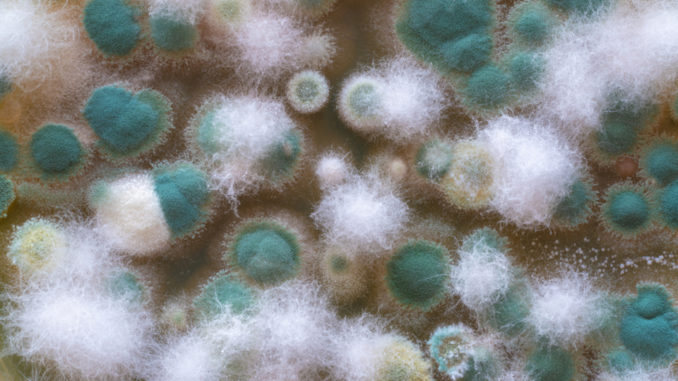
The pathogen Clostridium difficile, which causes one of the most common hospital-acquired infections in the United States, may have accomplices that until now have gone largely unnoticed.
This week in mSphere, researchers report finding fungi that flourish in people infected with the C. difficile pathogen. The findings suggest that transkingdom interactions between fungal and bacterial species play an important role in nosocomial infections, and the researchers hope that exploiting those interactions may point to a new way to treat C. difficile.
“The development of C. difficile infection is apparently influenced both by bacterial pathogens and fungi particular to this disease.”
said colorectal surgeon and senior author David Stewart, MD, at the University of Arizona College of Medicine, in Tucson.
“Until now, fungi have been understudied and under-appreciated in the gut microbiome.”
Fungal taxa make up a tiny fraction of intestinal microbes — between one-thousandth and one-tenth of one percent in healthy people. However, the new study suggests that even with low representation they may play an outsized role in dangerous infections.
“This discovery was just astounding to use, knowing that they’re such a small percentage of organisms in the gut,”
said microbiologist and lead author Regina Lamendella, Ph.D., at Juniata College in Huntingdon, Pa.
The researchers – largely made up of a team of undergraduates from Juniata — used high-throughput sequencing to identify fungal and bacterial populations in stool samples collected from 49 hospital patients. Eighteen of those had tested positive for C. difficile. The data revealed distinct species — two fungal and nine bacterial — that were enriched in the group of patients with C. difficile infections. Further analyses identified additional fungi with elevated abundances in samples from infected patients. In addition, the researchers found that increases in some fungal populations were tied to decreases in the population of some helpful bacteria. They didn’t find the same negative relationship between fungi and bacteria in patients without infections.
The researchers also conducted bacterial gene expression analyses, which led them to identify new pathways — or interactions between genes — associated with C. difficile infections. Those pathways pointed to still other bacterial species, including Escherichia coli, that may contribute to the dysbosis, or imbalance among bacterial species in the gut, associated with C. difficile.
The study suggests that patients with C. difficile infections host a mix of bacteria and fungi that’s specific to the disease, and could help it resist treatment, Lamendella said. However, she cautions that it’s too soon to know which fungal species are the most important, or to know what role the fungi are playing.
“Where we’re headed next is to try to pin down the interaction between C. diff and specific fungi, as well as other organisms within the gut,” she said. “Is that relationship antagonistic and negative, or positive? Do the fungi actually perpetuate gut dysbiosis?”
The researchers believe it’s a research question worth pursuing. C. difficile infection is difficult to control, largely because it affects patients who have already been treated with antibiotics. If researchers pin down a clear cause-and-effect relationship between fungal species and C. difficile infection, they might be able to develop treatments that don’t involve antibiotics.
“The fungi could be a therapeutic target,” Stewart said. “It would raise that possibility that we could repurpose already-approved antifungal drugs to treat C. diff or other diseases.”

